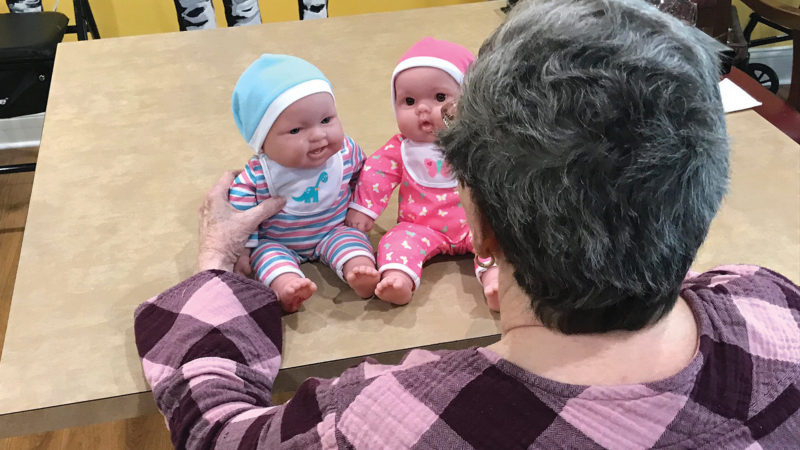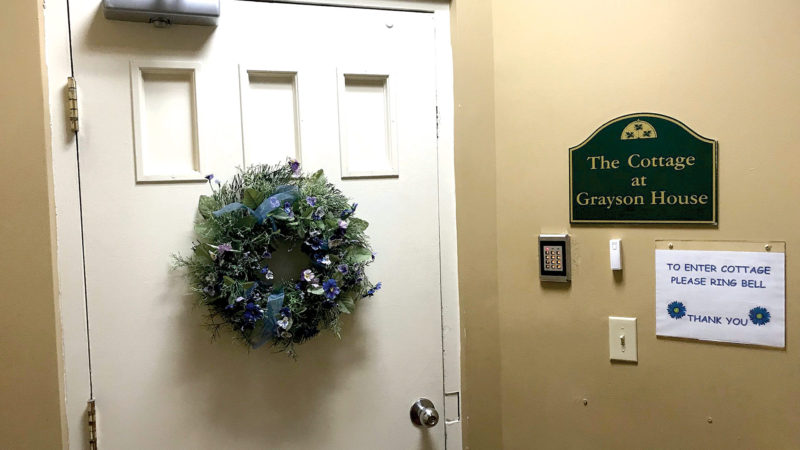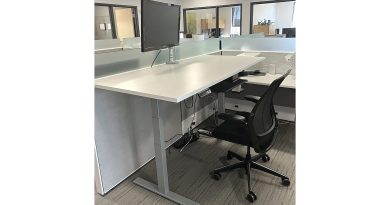Wellington at Springfield Adjusts to Needs of Baby Boomers
Changing with the Times
By Mark Morris
Americans from the Baby Boom generation, those born between the years 1946 and 1964, have always affected the stage of life they were in — new schools had to built across the country to accommodate them, for example — so it’s no surprise they are having a significant impact on senior living.
Christie Frappier, executive director for the Wellington at Springfield, said her facility is evolving to meet the needs of local Boomers, who are increasingly seeking a variety of senior residential services.
Formerly known as Keystone Woods, the 17-acre campus was renamed the Wellington at Springfield after Capital Senior Living acquired the property in 2016. Three different types of senior-residency options are available at Wellington: independent living, assisted living, and a residence for those who need memory care.
Frappier said the resident population is about 60% women and 40% men, numbers that reflect how the landscape is changing.
“That’s a big change from just 10 years ago, when the percentage was more like 85% to 90% women,” she noted, attributing some of that to increased longevity and more younger men (ages 55 to 70) who need services such as assisted living and memory care.

For this issue and its focus on memory care, Frappier spoke with HCN about the various types of residencies offered at Wellington and how the facility is responding to current changes and trends.
Memory Care
The entryway to the memory-care unit at Wellington, affectionately called the Cottage at Grayson House, sets a comforting tone that carries through once inside.
A far cry from institutional, the door for Grayson House resembles a front door of someone’s house, complete with a floral wreath.
Beyond the aesthetics, it’s a popular place. Over the past five years, the number of seniors needing care for dementia and related issues has increased to a point where the capacity of Grayson House has reached its limit; When Frappier spoke with HCN, the memory-care unit had 26 residents and a waiting list of nine people seeking to get in.
Figuring out who can benefit from memory-care services can be challenging.
List of Memory Care Communities Download Here
“Sometimes a person might actually have dementia, but other times a change in a person’s medication can cause temporary confusion,” said Frappier, adding that there is no one diagnostic tool for dementia, but in-depth behavioral tests, as well as simply asking basic questions, can be effective.
“We’ll ask a family member, ‘what’s going on?’ or ‘tell me about a day in the life of your mom or dad,’” she said, adding that the answers to questions like these and sometimes more difficult ones can help staff to better determine what level of care would be most beneficial for their loved ones.
Once admitted to the memory-care unit, each person has an individualized care plan. Frappier said the staff tries to match activities with the cognitive abilities of the resident.

“We have multiple things going on throughout the day,” she said. “In one area, people will do crossword puzzles, trivia games, and maybe some more involved crafts, and then there are other people who just enjoy watching an old western.”
Frappier also talked about the comfort some residents find with life-like baby dolls. “Our residents really enjoy them. Some know they are dolls, and some don’t, and we just go with it.”
Independent Living
Often referred to as “the cruise ship without the water,” the apartment complex at Wellington provides independent-living options for seniors. While each apartment has a full kitchen, residents can take advantage of meal service, housekeeping services, activities, and social events. A sense of security is provided by a front desk staffed 24 hours a day.
Over the past five years, Frappier said she has seen a “huge influx” of new people moving into the independent-living apartments. The reasons for this vary, but generally follow a pattern of seniors who are ready to downsize because their house has become too difficult or too expensive to maintain. In some cases, a surviving spouse may be seeking a more social environment.
“We offer the chance to come into a community for less money than maintaining a house, with more services and 95 friends immediately available to you,” Frappier said.
It’s not unusual for brothers and sisters and other family members, or groups of friends, to live on the campus. “We often see one person move in, and then their friends all follow,” said Frappier. “There’s one group of five people here who are around the same age who previously lived in the same area of Springfield together.”
Community living also benefits those Baby Boomers who never married or had children. Frappier said the social environment can make a big difference for the single person. “Just having someone in their life to say, ‘yes, you should have a doctor check that out.’”
As the name suggests, independent living is exactly that. If a resident starts to develop problems, the staff cannot provide any higher-level services until the family of the resident becomes involved. “If we noticed a notable change in a resident, we would have a conversation with the family to let them know, and that they should keep an eye on any further changes that are happening,” said Emma Burke, marketing coordinator for Wellington.
Frappier said family members often struggle with accepting that their loved one may need a higher level of care. That can mean anything from more home care to making a move into assisted living.
“We have those conversations quite a few times, and we are able to appropriately transition people into assisted living,” said Frappier. “Sometimes residents refuse, but either way, the family needs to be closely involved in the process.”
Assisted Living
Many seniors rule out independent living as an option because they do not want to sell their home of many years. But those who remain in their home often find the place that brings them the most comfort begins to work against them.

“It’s not unusual for older houses to have the washer and dryer in the basement and the only bathroom on the second floor,” Frappier explained. “Because of limited mobility, mom may live on the first floor with a bed in the living room, but she’s wearing the same clothes over and over, partly because she can’t get downstairs to do the laundry.”
This situation is one of many factors that can lead to recommending assisted living as a more appropriate environment.
“We see folks who are nutritionally challenged, others who aren’t taking their medications appropriately, or they are cancelling their doctor appointments all the time because it’s too difficult to get out and go,” she said.
Providing care in the home can address many of these needs, and at-home care services have seen enormous growth in the last several years. But Frappier said that’s an option that can eventually become cost-prohibitive, with full-time caregivers costing as much as $11,000 a month, based on hourly rates.
Many families will opt for a lower level of home care and depend on an adult child or other family member, usually female, to take on a caregiver role.
“Whether it’s cultural or family tradition, some people feel obligated to be the caregiver, but they often find themselves quickly getting overwhelmed,” Frappier said. “Caregiver stress and caregiver burnout is a very real thing.”
Burke added that at-home care can be good option, but there are times when home-care workers call out sick, increasing stress levels for the caregiver. “By contrast, once someone has chosen assisted living, the family can feel secure that their loved one has round-the-clock care and they are in a safe environment.”
Frappier and her colleagues try to offer support for families trying to determine when right time to make a change for their loved ones.
“It starts with a conversation,” she said. “Once we can build a relationship with the family, we can get a fuller picture of the situation and better advise what resources are available to them.”
Moving a loved one into assisted living is a big change, Frappier acknowledged, but once family members are relieved of the caregiver role, they can enjoy time with their loved one.
“When our staff is taking care of the food preparation, medication management, and all the rest, the family member can enjoy time with their loved one,” she added, “and instead of working for them, they can visit as their child.”
Bottom Line
As a growing number of Baby Boomers reach retirement age, they have more options for senior living — and more challenges.
“Our residents who grew up in the Great Depression saved to a point where they could fund their long-term needs,” said Frappier, noting that many of their adult children, now reaching their 70s, didn’t share that outlook; they lived rather than saved. “Which is fine because we are branching into affordable opportunities to accommodate their situation.”
Baby Boomers may approach life differently, she went on, but one thing that doesn’t change is the reality that many people can genuinely benefit from a community environment, whether it’s independent living, assisted living,or memory care.



